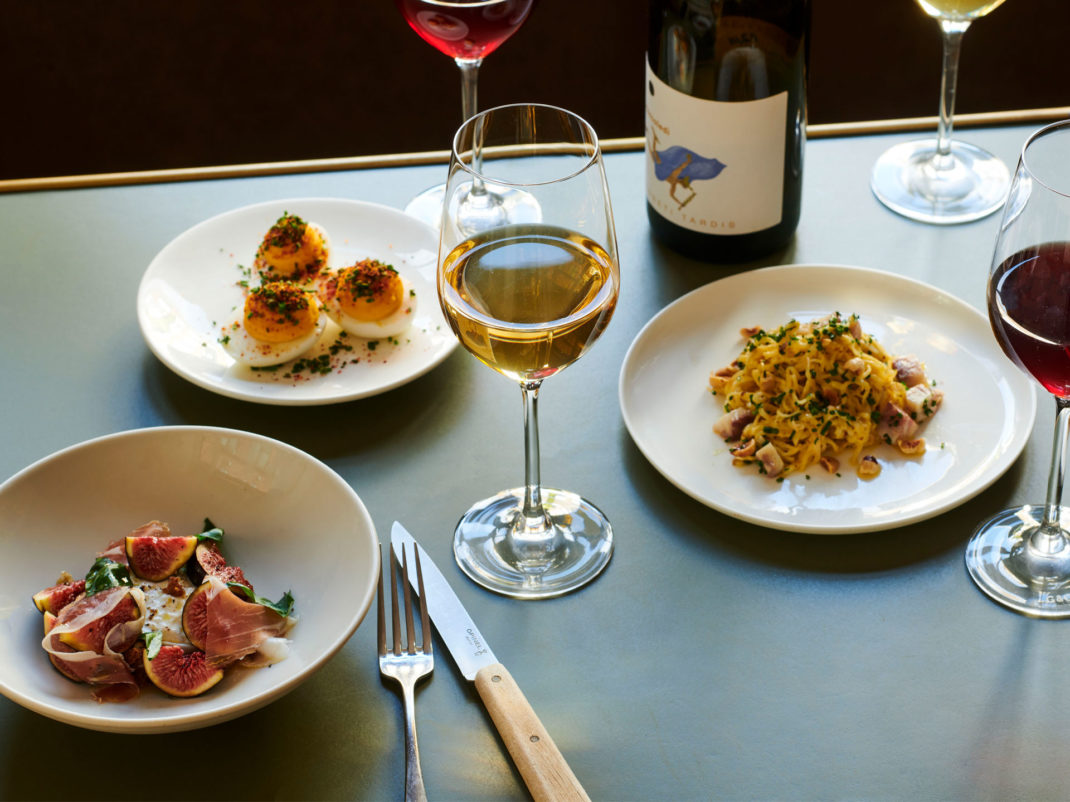
Recipe: Roberta Hall-McCarron’s Pappardelle with Lamb Shoulder Ragout
By
6 months ago
A hearty pasta dish from the top Scottish chef
One of Scotland’s top chefs, Roberta Hall-McCarron runs three restaurants across Edinburgh: The Little Chartroom, Eleanore, and Ardfern. She has become renowned for her hyper-seasonal approach to cooking, centred around the best Scottish ingredients. And now, Roberta is sharing some of her recipes with us through a new cookbook, The Changing Tides. Out this November, the book is divided into the four seasons, drawing inspiration from the food of Roberta’s childhood.
Below, we share one of the recipes designed for the autumn/winter season: a homemade pappardelle with lamb shoulder ragout – perfect for cosy dinner parties over the next few months.
Pappardelle with Lamb Shoulder Ragout Recipe
You do really need a good-quality lamb stock rather than stock cubes here as it gets reduced down in the sauce. You can buy lamb bone broth online, or you could use 1.5 litres of Truefoods lamb gravy mixed with 1 litre of water.
Serves 4
Ingredients:
- 1 small lamb shoulder, weighing about 800g
- 1 tbsp fennel seeds
- 4 bay leaves
- 1 tbsp sea salt
- 1 fennel bulb, roughly chopped
- 1 onion, roughly chopped
- 2.5l lamb stock
Pappardelle
- 330g ‘00’ pasta flour
- 160g whole egg
- 30g egg yolk
To serve
1 recipe pangrattato (see below)
Method:
- Preheat your oven to 170°C fan.
- Place the lamb shoulder in a deep roasting tin and scatter over the fennel seeds, bay leaves and salt. Add the chopped fennel and onion, then pour over the lamb stock and cover the tray with tin foil. Bake for 4 hours until the lamb is tender and falling off the bone.
- While the lamb is cooking, make the pasta dough for the pappardelle. Put the flour in a bowl or a stand mixer with the dough hook attachment. Whisk the whole eggs and egg yolks together, then add them to the flour and mix until they’re fully incorporated. Remove the dough from the bowl and knead it by hand on your work surface for about 5 minutes, until it’s smooth and pliable. Shape into a ball and wrap in cling film, then place in the fridge to rest for a couple of hours before using.
- Carefully remove the meat from the stock and let it cool enough to handle. Pick the meat off the bone and break it into smaller pieces with your fingers, discarding any sinew. Pass the stock through a fine sieve into a pot, and reduce until it has thickened to a good sauce consistency and tastes punchy but not too intense. Add the lamb and stir it through.
- Now for the pappardelle. Cut the pasta dough into two pieces and leave one wrapped up in cling film. Flatten the other one to about 2cm thick with a rolling pin, then start feeding it through your pasta machine on the widest setting. Fold in either end of the pasta sheet so you have a triple layer, then feed it through the machine again. Now, change the pasta machine to the next setting and roll the pasta through twice, without folding it. Roll it twice through each remaining setting until it has gone through the second smallest, and you’ll end up with a long, thin sheet of pasta. Square off each end of the pasta sheet and cut it into 20cm lengths then, with a pasta cutter, cut each length into pappardelle 5cm wide. Dust the pappardelle with a little semolina flour to prevent them sticking together. Repeat the whole process with the other half of the pasta dough.
- Cook the pasta in a pot of boiling, salted water for 2 to 3 minutes. Drain and mix with the lamb ragout, then divide between your bowls and sprinkle with plenty of pangrattato.
Pangrattato
Pangrattato is a great way to put texture into food – I always add yeast flakes to bring an amazing umami taste.
Makes about 65g
Ingredients:
- 6 tbsp panko breadcrumbs
- 2 tbsp yeast flakes
- ½ tsp garlic powder
- 60ml sunflower oil
Method:
Mix together the panko, yeast flakes and garlic powder. Heat the sunflower oil in a frying pan, then add the panko mix and cook until golden brown and crispy, keeping the pan moving so it cooks evenly. Transfer to a sieve if there’s a lot of excess oil; if not just drain on a couple of changes of kitchen towel.
Recipe extracted from The Changing Tides: A Cookbook by Roberta Hall-McCarron, out 7 November 2024 (Kitchen Press)






